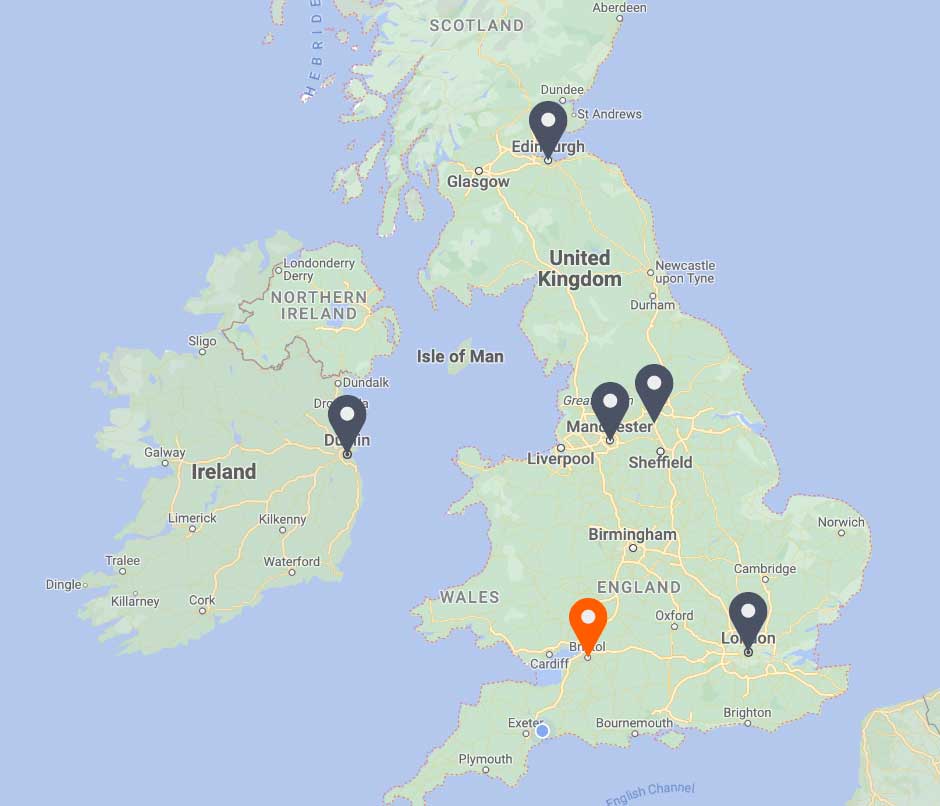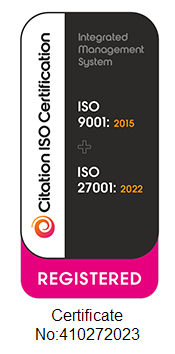THIS ARTICLE AT A GLANCE
CONTACT ETS
If you have any questions or would like to discuss further what you should be doing, ETS is here and willing to help.
Call 0117 205 0542
Email enquiries@energy-ts.com
Submit a contact form
CHECK OUR SERVICES
Harnessing Artificial Intelligence (AI) for Energy Efficiency: The Future is Here.

Artificial Intelligence breakthroughs are becoming more and more common. Everyone is racing to understand how ChatGPT can revolutionise their world. Unfortunately, ChatGPT’s attempt at this blog didn’t quite cut it…
One of the big concerns or threats of AI when it appears in Sci-Fi pop culture is whether AI will allow the machines to overthrow and replace us, their human overlords. Fortunately, despite several good uses of Artificial Intelligence technologies, that doesn’t seem to be likely just yet within Energy Management. However, that doesn’t mean that AI hasn’t drastically improved our capabilities.
Smart buildings
Smart buildings rely on automated control of their various systems to minimise energy consumption. BMS systems make use of IoT (Internet of Things) technologies to react to conditions as they change, rather than requiring a manual input from a maintenance engineer or energy manager.
This may not seem related to AI at first thought, but AI has been around for a long time and doesn’t only refer to machines that “think” like a human. Artificial Intelligence also includes computer systems that can make pre-determined decisions from a multitude of different inputs. In this case these inputs are a range of sensors measuring light level, temperature, air quality, water pressure and more throughout the building.
Even with a BMS installed, a building isn’t always guaranteed to be operating as efficiently as it can be. A key part of energy management is analysing consumption data; either for the entire building at main meter level, or on certain circuits to identify issues with specific assets at sub meter level, or a combination of both.
working with large estates
When working with large estates, or when analysing data for a longer period of time, it is not always straight-forward how to pinpoint the biggest faults and issues in a dataset. Fortunately, AI is well suited to “grunt-work” in data analysis and there are several platforms that can identify anomalies in consumption profiles very quickly, and certainly more cost-effectively than a human energy manager could.
The AI model is trained using data from a baseline period – usually 12 months. Sometimes it is possible to use a shorter baseline, but due to seasonality it is best to allow the models to use a full 12 months of data to understand and define what “normal” consumption is for the building. The models will then use external factors, such as outside temperature (and derived heating/cooling degree days) to compare the actual consumption to the adjusted expected consumption. If these are outside a pre-configured tolerance, then the anomaly is raised for an energy manager or engineer to investigate.
identify and isolate an anomaly
- confirm that this was not an anomaly and was caused by an operational change on site. If this is the case, the model then learns not to raise similar issues in future.
- confirm this anomaly relates to a fault and tells the model to continue to raise similar anomalies if they occur.
Of course, when you combine the two use cases, the learnings from analysing consumption can be used to reprogram the BMS to then prevent similar occurrences from happening in future.
AI is a productivity tool
Right now, AI is a productivity tool within Energy Management, enabling us to proactively prevent wasted consumption on site using a well-programmed BMS, and reactively identify any anomalies in energy consumption. It allows us to work much more efficiently and spend our time resolving issues, rather than trying to identify them.
BMS technologies have recently started to go one step further, and AIoT (Artificial intelligence of things) is the combination of IoT technologies with systems that “think” for themselves and adjust building controls automatically based on the inputs they receive.
AIoT BMS systems may be the first step on the road to completely automating energy management, but at ETS we aren’t quite ready to remove our 25+ years of energy management experience from the solution we offer to our clients. If we find a way to download and preserve that knowledge within the systems, perhaps it will then be time for us to put our feet up and relax…
Final thoughts
Related Article
8 Ways Businesses Can Reduce Energy Use in the Workplace This Winter
Discover how to comply with ESOS Phase 4 and unlock energy-saving opportunities for your business. This guide explains the requirements, highlights key deadlines, and provides actionable strategies. Learn how energy audits, tailored action plans, and expert support can reduce costs, improve efficiency, and align your organisation with sustainability goals.
ESOS Action Planning: Complying with Phase 4 and Implementing Energy Saving Strategies
Discover how to comply with ESOS Phase 4 and unlock energy-saving opportunities for your business. This guide explains the requirements, highlights key deadlines, and provides actionable strategies. Learn how energy audits, tailored action plans, and expert support can reduce costs, improve efficiency, and align your organisation with sustainability goals.
Important Update: What You Need to Know about ESOS Phase 3
Time is ticking for the ESOS Phase 3 deadline. The Environment Agency announced that the reporting system is available now. For organisations qualifying for ESOS Phase 3, the deadline for submitting a compliance notification is 5 June 2024, and organisations should still look to meet this compliance notification deadline where possible.









































































